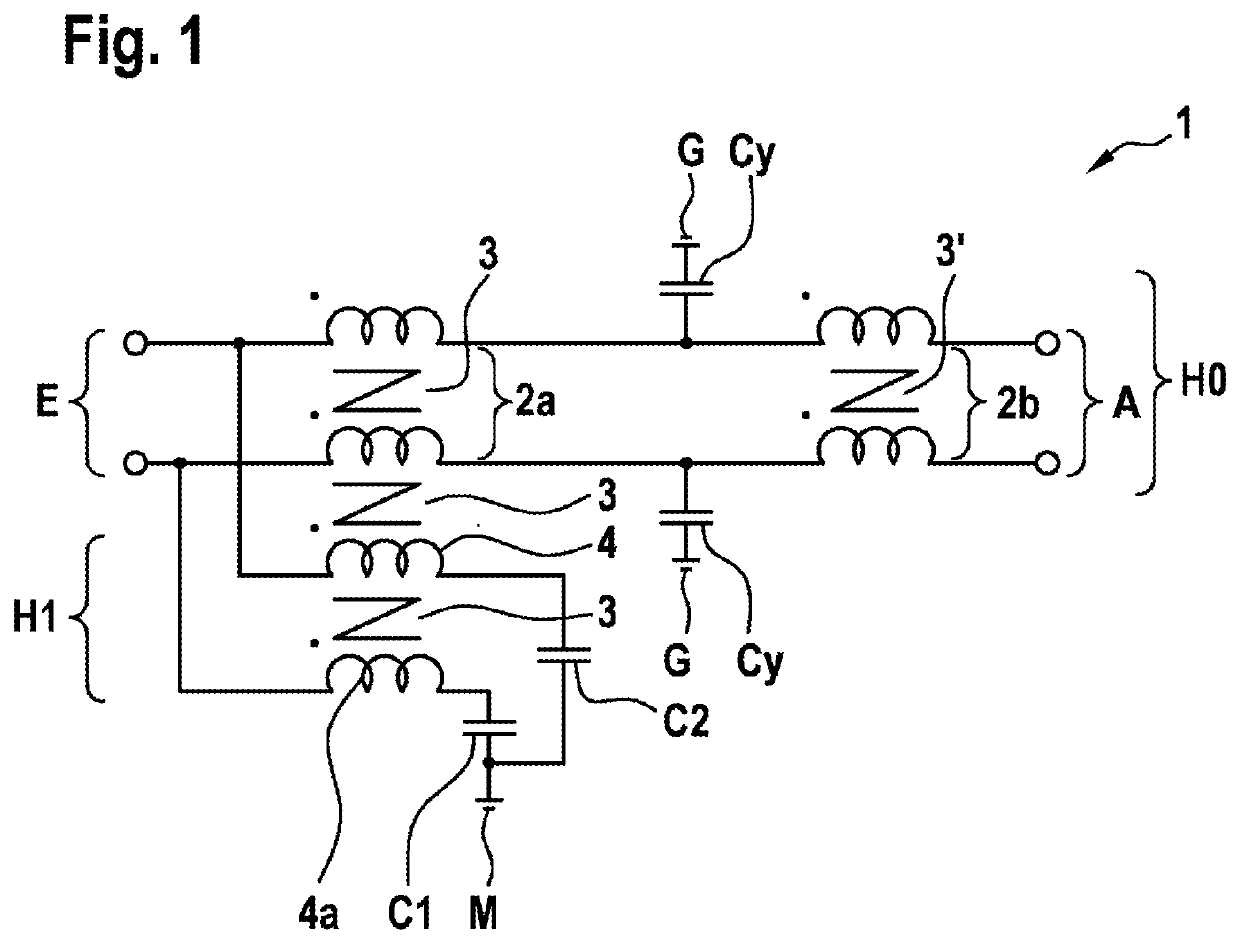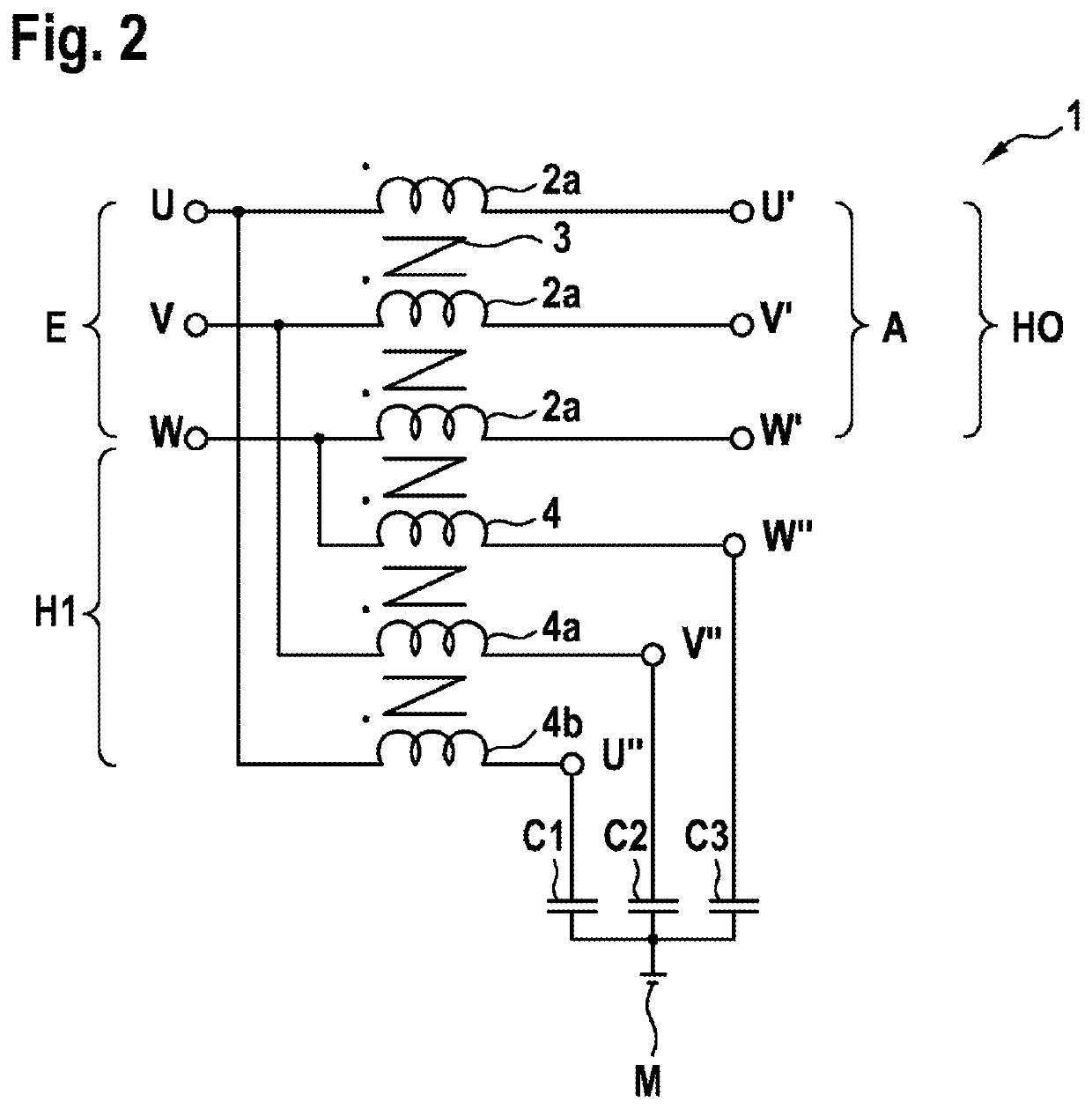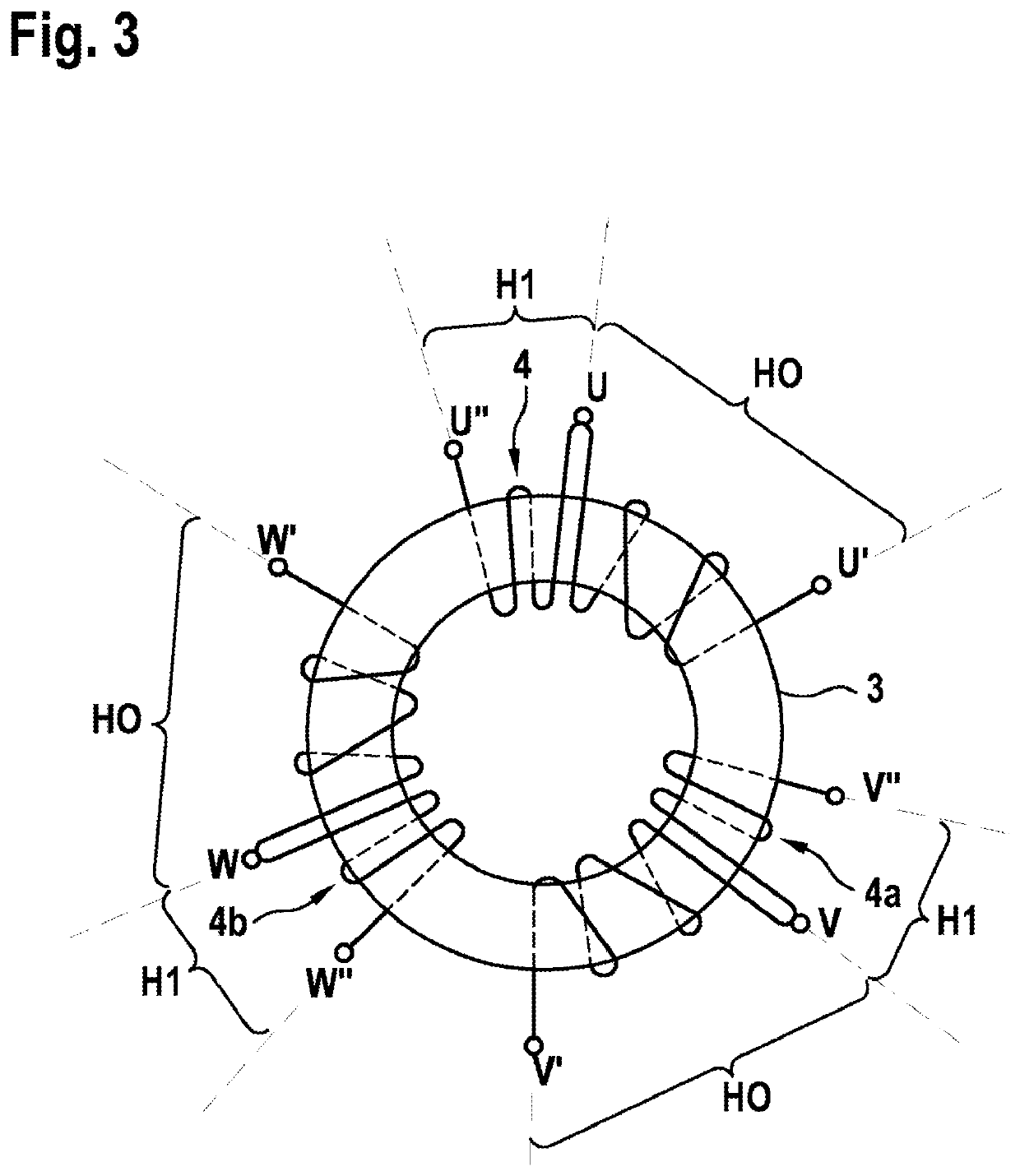Electrical filter device for filtering a common-mode interference between a current source and a load
a technology of electric filter and load, which is applied in the direction of electrical equipment, multiple-port networks, power conversion systems, etc., to achieve the effect of limiting the built-in capacitance of the y capacitor and reducing the loss of insertion
- Summary
- Abstract
- Description
- Claims
- Application Information
AI Technical Summary
Benefits of technology
Problems solved by technology
Method used
Image
Examples
Embodiment Construction
[0042]FIG. 1 shows an electrical circuit diagram for a filter device in accordance with one exemplary embodiment of the present invention.
[0043]The electrical filter device 1 has a signal input E and a signal output A, each advantageously having two contacts, wherein a current source is connectable to the signal input E, and a load, for example an inverter having an electric machine, is connectable to the signal output A. The signal input in this case has a first terminal E1 and advantageously a second terminal E2. The filter device 1 comprises a main stage H0, which comprises a first main inductance 2a at the signal input E, which first main inductance is connected to advantageously the two terminals E1 and E2 of the signal input E, and can advantageously have a second main inductance 2b at the signal output A. The first main inductance 2a can also comprise a plurality of main inductances, which can each be connected to a terminal at the output or input. The first main inductance 2...
PUM
 Login to View More
Login to View More Abstract
Description
Claims
Application Information
 Login to View More
Login to View More - R&D
- Intellectual Property
- Life Sciences
- Materials
- Tech Scout
- Unparalleled Data Quality
- Higher Quality Content
- 60% Fewer Hallucinations
Browse by: Latest US Patents, China's latest patents, Technical Efficacy Thesaurus, Application Domain, Technology Topic, Popular Technical Reports.
© 2025 PatSnap. All rights reserved.Legal|Privacy policy|Modern Slavery Act Transparency Statement|Sitemap|About US| Contact US: help@patsnap.com



